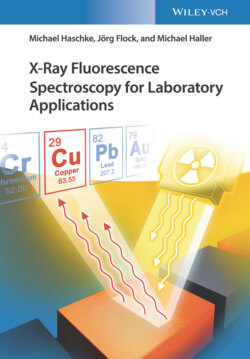Читать книгу X-Ray Fluorescence Spectroscopy for Laboratory Applications - Michael Haschke, Jörg Flock - Страница 28
3 Sample Preparation 3.1 Objectives of Sample Preparation
ОглавлениеIt is generally assumed that the effort for sample preparation for X-ray spectrometry is very small, in particular since very different sample qualities can be analyzed and therefore, as with other analytical methods, the transfer of the starting material into a specific aggregate state is not necessary. Another common fact is that the sample is not modified by X-ray fluorescence (XRF). This is only true, however, insofar as the sample, which is used for measurement in the instrument, will not be changed and will be consequently available for further analytical procedures. Yet, significant changes to the sample material may be required during the preparation procedure itself.
The types of materials that can be analyzed by X-ray spectrometry range from compact homogeneous solids to small samples and liquids, as well as nonhomogeneous samples. Careful preparation of these different materials is the prerequisite for correct analytical results. With the sample preparation, different goals are pursued:
At first, the sample must be adapted geometrically to the instrument. For this purpose, it may be necessary to cut samples to size or prepare them such that they can be positioned in the measuring instrument, for example, cutting disks from the material, pressing powder samples into tablets, or filling fluids into suitable measuring cells.
On the other hand, the result of the sample preparation must be a laboratory sample for which the analyzed volume corresponds to the material to be characterized and for which the surface texture does not influence the measurement result. Owing to the limited penetration depth of X-rays, in particular for light elements, this means that in the case of solid-state samples, the surface must be free of corrosion layers. In addition, the surface roughness should be less than the information depth of the fluorescence radiation with the lowest energy emanating from the sample, or in the case of powder samples, the grain sizes should be of the same order of magnitude as the information depth.
An important objective of sample preparation can be the production of a homogeneous sample in order to reduce the influence of mineralogical effects, and the influence of matrices or surface roughness. In this way, the analytical accuracy can be influenced by the different preparation methods.
The sample composition should not change during analysis, i.e. both chemical reactions and influences by the excitation radiation are to be avoided by suitable preparation as far as possible. However, it is also possible to make selective changes to the sample type in order to prepare them for measurement. In this case, however, a determination of the recovery rates through intensive studies is recommended.
Different preparation methods are available for the various sample qualities – they are used depending on the desired analytical accuracy as well as the time available for the analysis. In this chapter, we will give examples of the commonly used preparation techniques for different sample qualities including their time and effort, but also with their effect on the achievable analytical accuracies. Where applicable, more detailed descriptions of the preparation techniques are discussed in connection with the presentation of individual analytical tasks.
Problems of sampling are not covered here since they are very much dependent on the respective analytical questions. It is assumed that the material to be examined is already available and has been processed by the initial preparation steps, e.g. crushing and, if applicable, multiple milling and separation. It is available not only in sufficient quantity, but also in quality that adequately represents the material to be investigated.
The samples produced prior to preparation as well as those produced by the preparation are named differently according to their state and their intended purpose according to DIN 51418-2 (DIN-51418-2 2014). The material that is provided for analysis is called a laboratory sample. This sample can be analyzed either with or without further preparation.
The measuring sample is the sample measured with the analyzer; the retained sample is the sample that is archived for necessary traceability. It can be either the measuring sample itself or a sample prepared in parallel. The measuring samples are distinguished according to their purpose; there are analyte samples, calibration samples, recalibration samples, drift correction samples, blank samples, and others.
